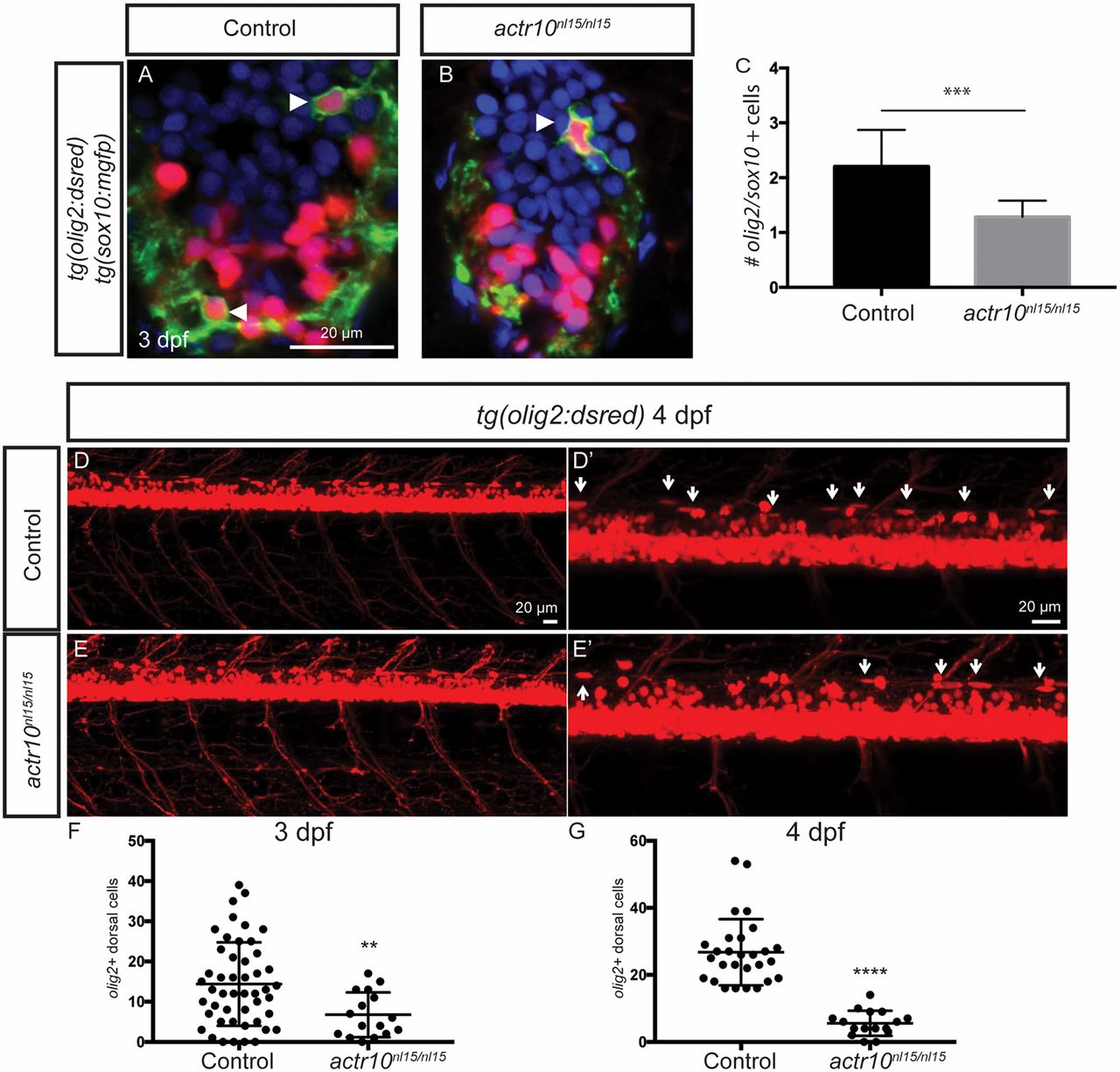Fig. 3
actr10nl15/nl15 mutants have fewer OPCs. (A and B) Double transgenic tg(sox10:mgfp);tg(olig2:dsred) larvae were used to identify OPCs in spinal cord cross-sections at 3 dpf. Arrowheads mark OPCs, which are labeled by cytoplasmic DsRed and membrane-tagged GFP. (C) Mutants (n = 7) have significantly fewer OPCs in the spinal cord compared with sibling controls (n = 16; ***P < 0.0002). (D–G) The tg(olig2:dsred) line was used to count the number of olig2-labeled elongated cells in control animals (D and D′, arrows) compared with actr10nl15/nl15 mutants (E and E′, arrows) at 3 dpf and at 4 dpf (pictured). (F) Quantification revealed a significant difference between the number of olig2-labeled dorsal cells in controls (n = 48) compared with actr10nl15/nl15 mutants (n = 16; **P < 0.007) at 3 dpf. (G) Similarly, there was also a significant difference between controls (n = 28) and actr10nl15/nl15 mutants (n = 16; ****P < 0.0001) at 4 dpf. Unpaired t tests with Welch’s correction were used for statistical analysis.

